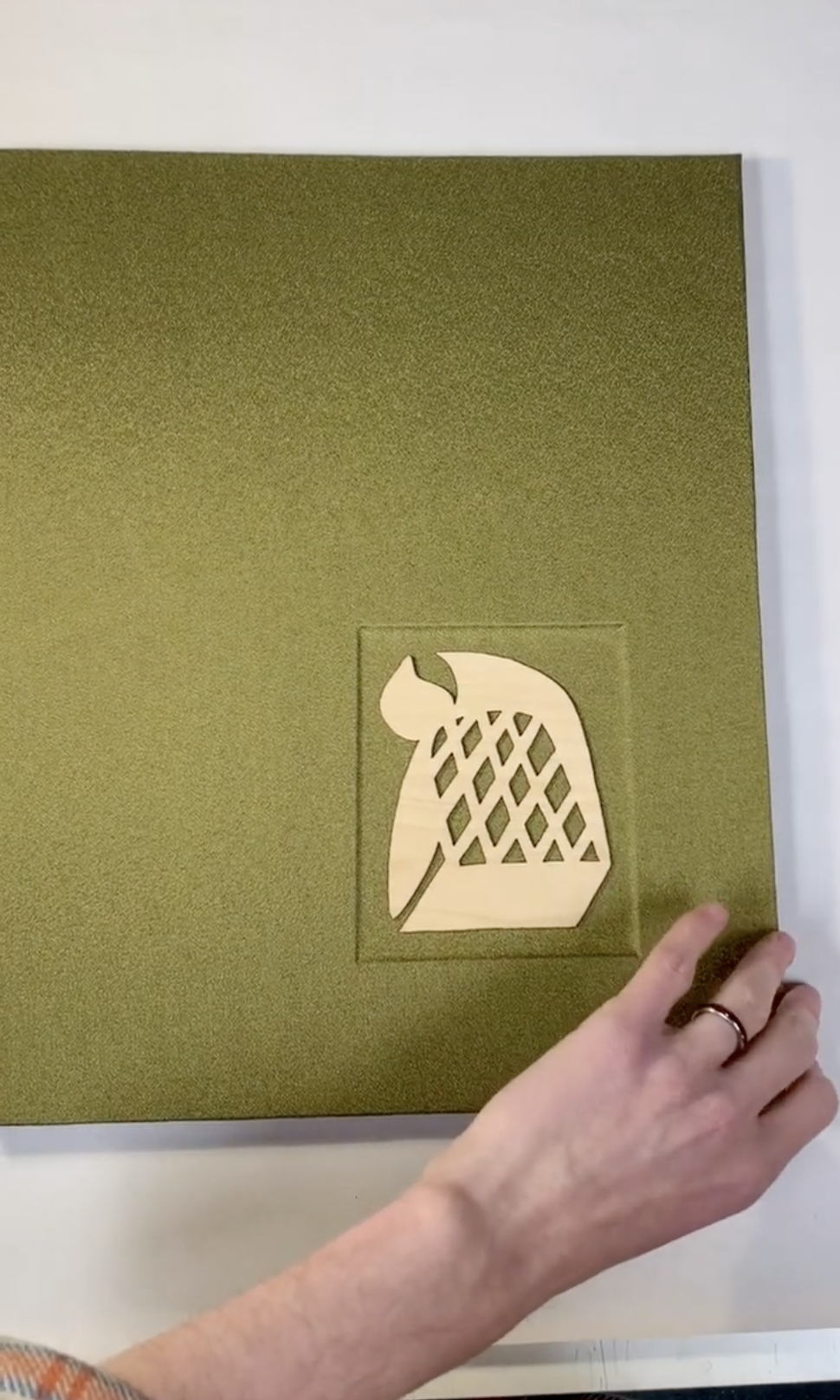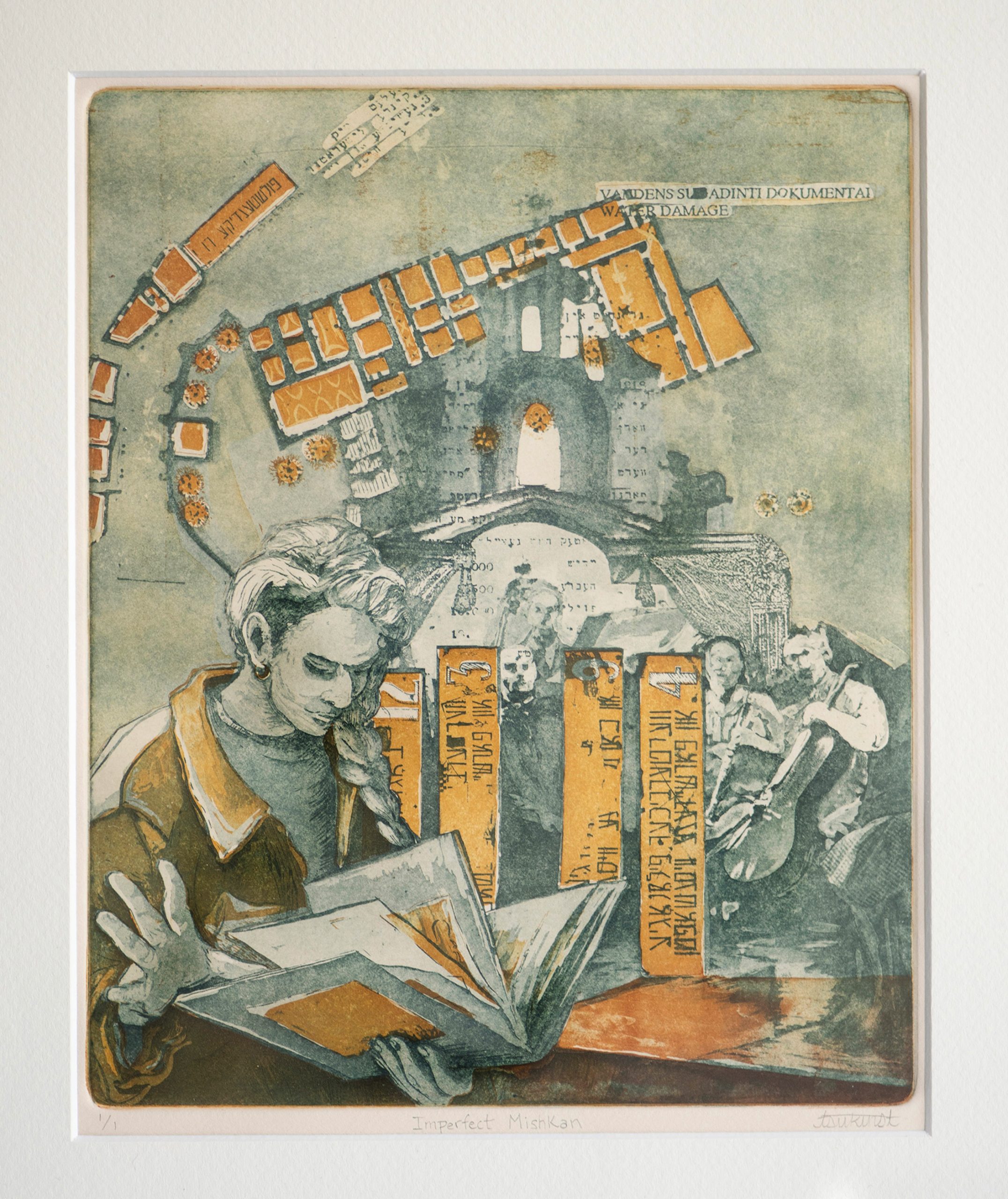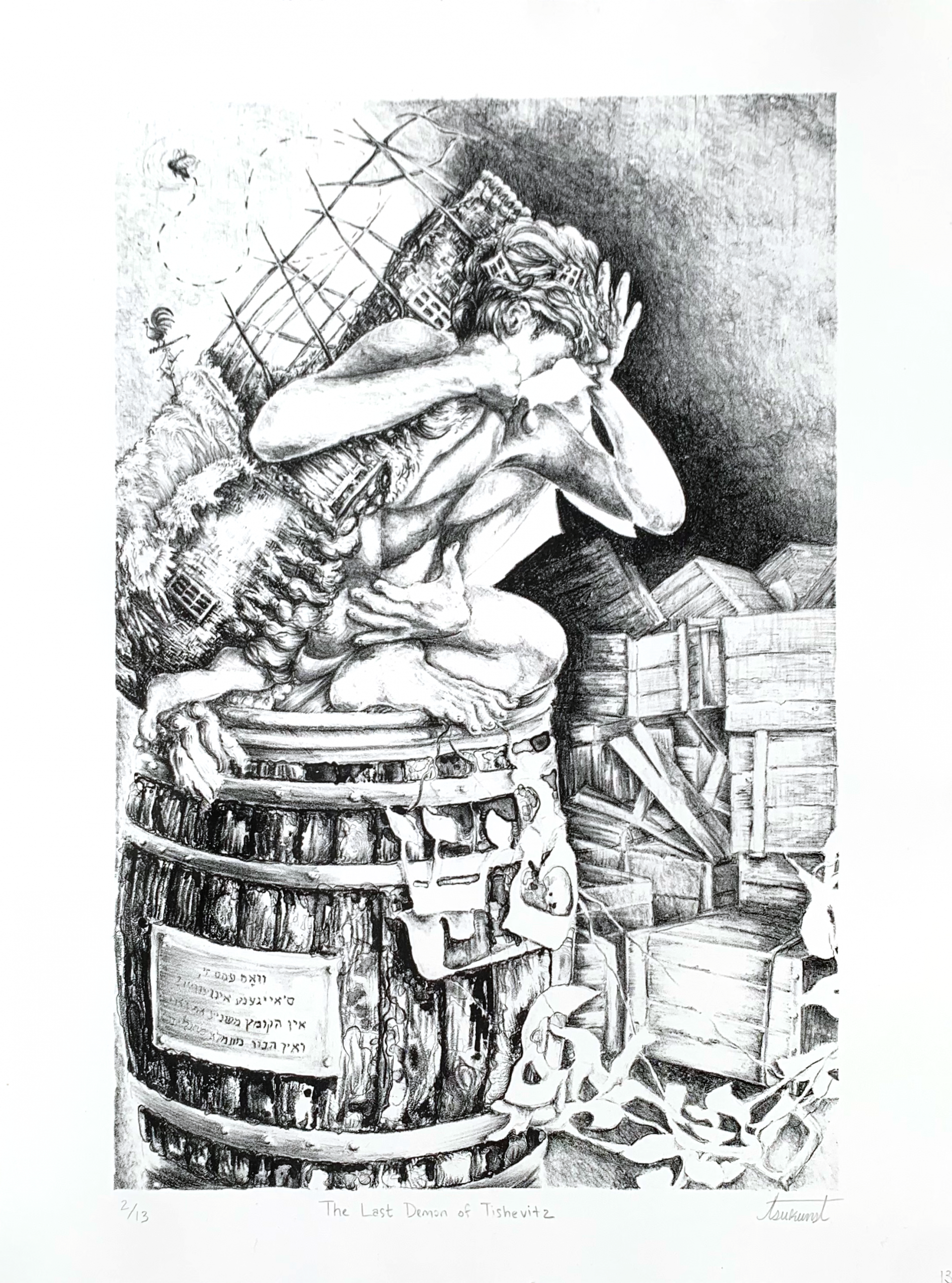Etai Rogers-Fett
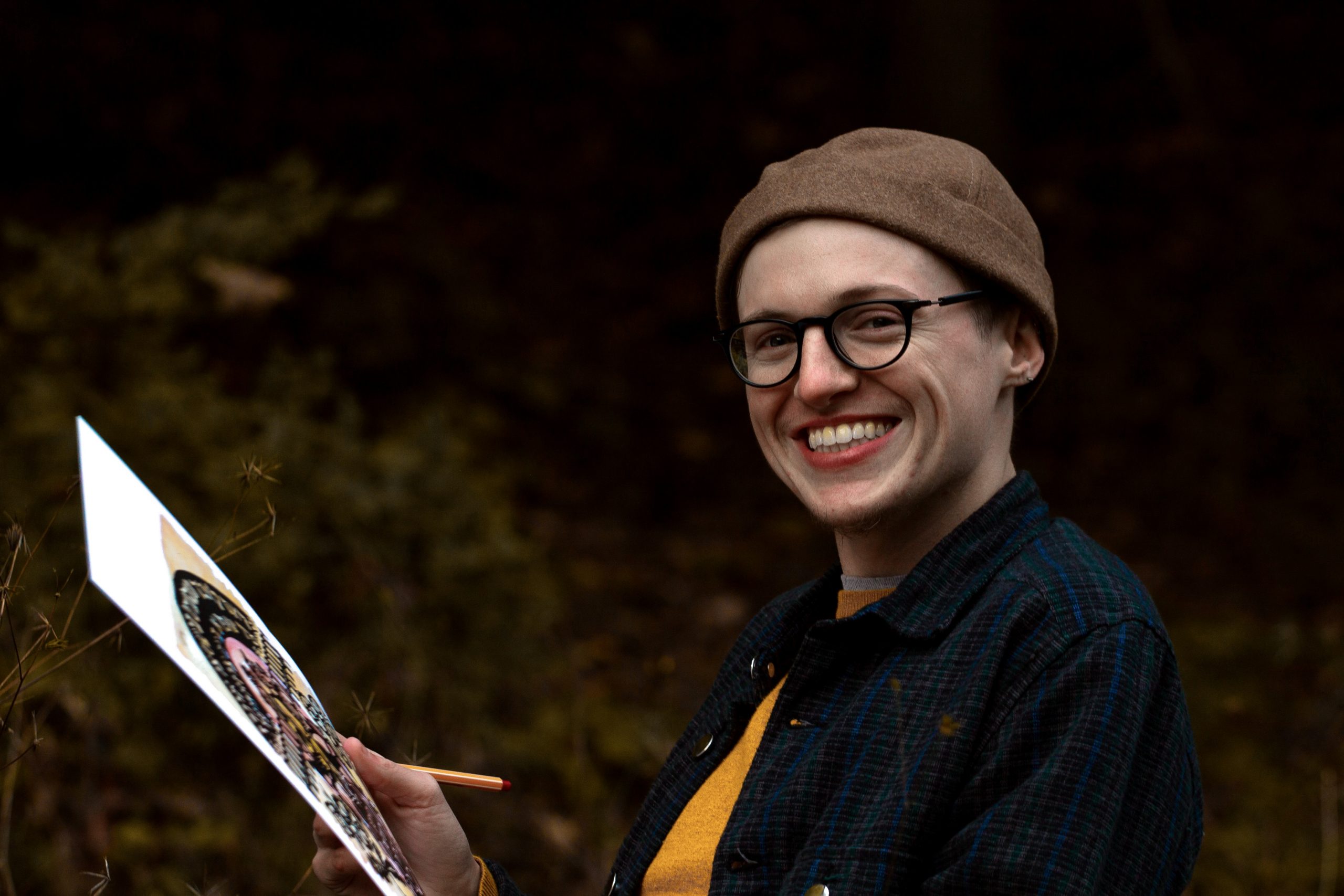
Area of Study
Class
Website
Education
Etai Rogers-Fett
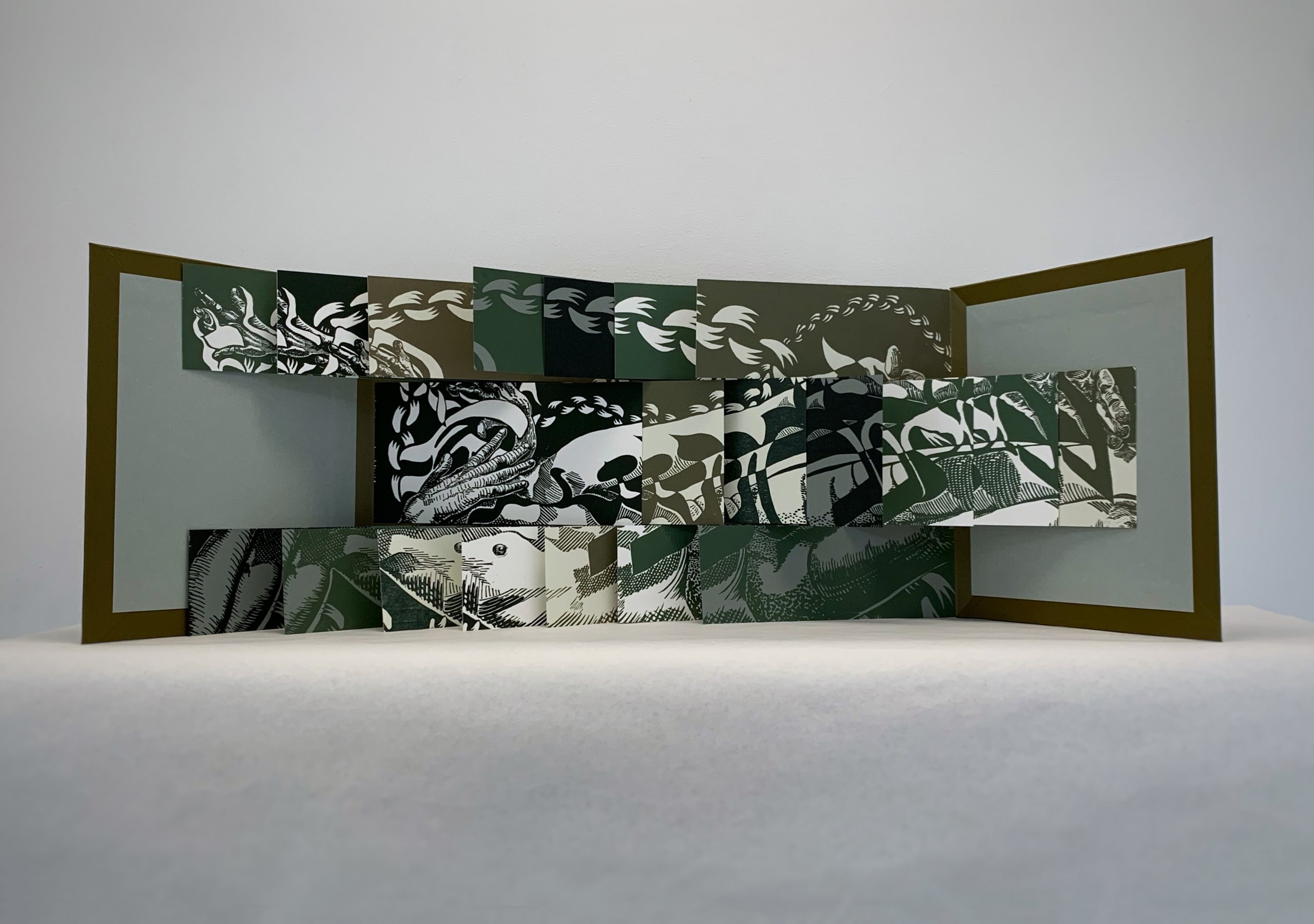
wrestledance with mameloshn, 2025, 11.5 x 15 x 55, Woodcut with Flag Book Design
Etai Rogers-Fett (he/him) a printmaker and book artist weaving together archival research, oral history, folktales, and speculative imagining in order to visually explore Yiddish cultural transmission. Etai studied Yiddish language at the YIVO Institute for Jewish Research and Vilnius University in Lithuania. In 2016, he received his BA in History and Jewish Studies from Johns Hopkins University, where his time spent researching the Yiddish press expanded his understanding of the artist’s role from a singular creative force to a collaborator and cultural translator. Etai further pursued his artistic interest at University of the District of Columbia while working as a Jewish and arts-enrichment elementary school educator. After graduating with a Studio Art BA in 2022, Etai developed his technical skills and teaching experience in etching as a printshop artistic associate at Pyramid Atlantic Art Center, and in woodcut as assistant to Jun Lee Prints.
Etai is currently a candidate for a Master of Fine Arts with a concentration in Printmaking at the University of Tennessee, Knoxville and works as a graduate research assistant within the Religious Studies department.
Artist Statement
I am interested in the ways that cultural knowledge is shared through mentorship and collaborative practices, as well as moments of rupture and subsequent efforts at reconnection within these lineages. I understand acts of repetition, transmission, and transformation as the connective marrow between the cultural dimensions of my work and the technical side of craft traditions like printmaking and book binding.
My work often begins with a process of papercutting and collaging my collections of archival materials, sketches, and photos. By manipulating each piece by hand, I am able to try out different relationships between the narrative fragments – interspersing a historical text with imagery from a folktale, or inserting papercut portals into an architectural photo. I then translate the composite imagery into a drawing for an etching or woodcut print. The resulting prints move with a delicate, dreamlike quality between recognizable letterforms, figures, and landscape and abstracted distortions. I aim to evoke the always fraught attempt at piecing together a coherent cultural narrative.
In my most recent artist book, wrestledance with mameloshn, I use the tiled form of a flag book to embody the process of recovering a “mother tongue” that is post-vernacular—that is, a language no longer commonly used in everyday life. By opening and closing the book, the reader participates in the act of fragmenting, aligning, and proliferating the image of the figure wrestle-dancing with the word mameloshn. I am drawn to soft, analogous color palettes that invite engagement with the emotional intensity of fragmented memory and cultural loss, and foster receptivity to the possibility for fluidity and adaptation in response to instability. I incorporate patterns and symbols from Ashkenazic Jewish papercut traditions, which were often used to transform paper into amulets and ritual objects. Through the work of the hand, my bookmaking enlivens paper objects with the power of creation that Jewish tradition ascribes to the written word.
My practice is guided by my academic background researching the early 20th century Yiddish press and popular cultural modes of cultural production. My 2024 solo show, Veln Di Verter Oykh Nern (The Words Will Also Nourish), featured an edition of artist books and twelve accompanying prints that emerged from the recorded testimony of Paja L, a young woman, teacher, and library worker in the Vilna Ghetto. The prints featured in this collection situate Paja’s testimony amongst broader narratives of cultural resistance in Vilnius, Lithuania, drawing on Paja’s direct quotes and supplementary historical documents including cultural event posters. While my art practice has a strong grounding in historical research, I am also inspired by my involvement in the contemporary Yiddishist and Klezmer music and performance scene, and a related set of political commitments to diasporism. My audience and workspace is “Yiddishland” – a nationless, borderless geography defined through a dense network of relationships and lineage, and actively constituted through cultural production and participation.
Gallery
